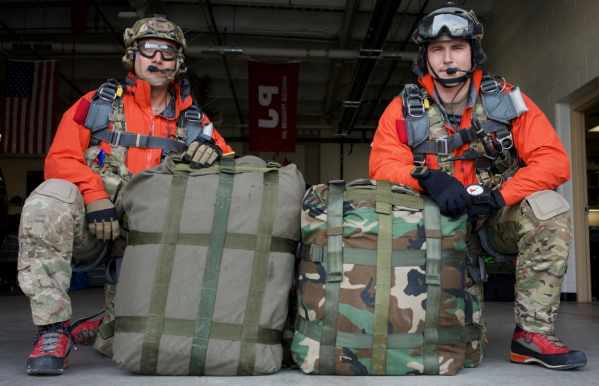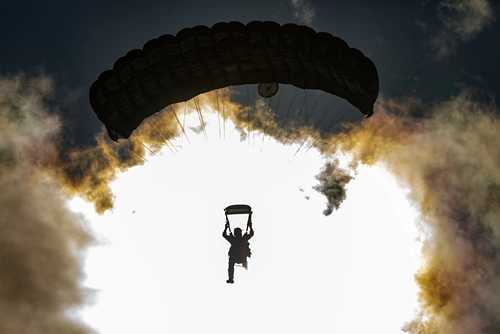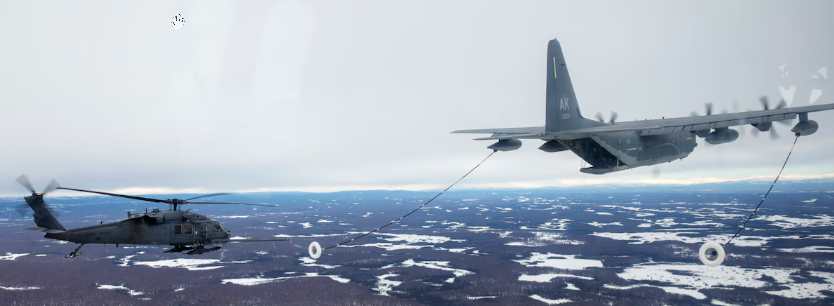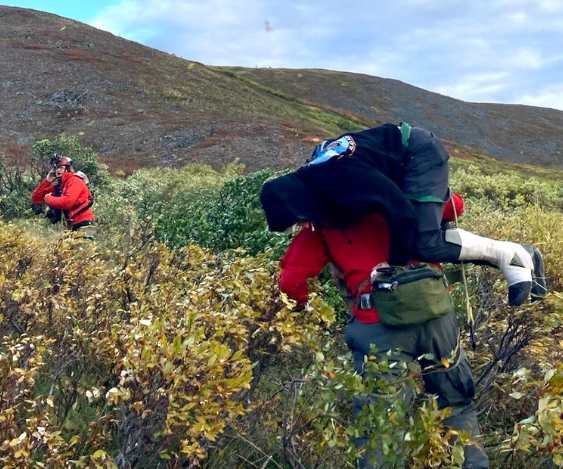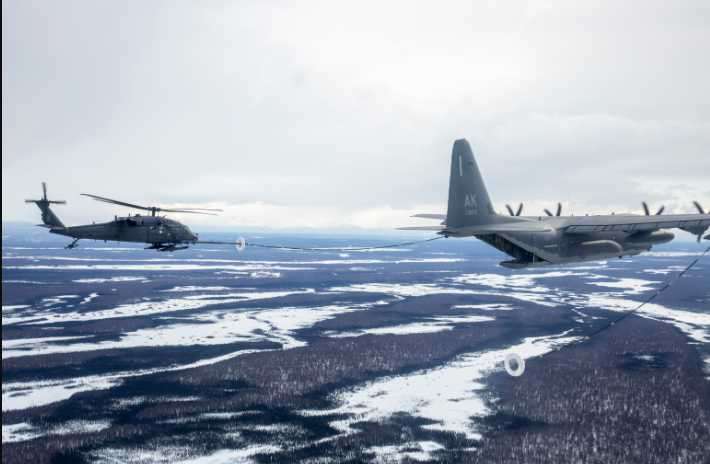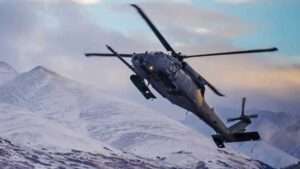
JOINT BASE ELMENDORF-RICHARDSON, Alaska — Alaska Air National Guardsmen of 176th Wing rescued an injured skier Nov. 16 near Arctic Valley about eight miles northeast of downtown Anchorage.
The party used a cell phone to call the Alaska State Troopers. Due to poor weather, the Troopers requested assistance from the Alaska Rescue Coordination Center at JBER.
The AKRCC then requested assistance from 176th Wing, which dispatched a 210th Rescue Squadron HH-60G Pave Hawk helicopter with 212th Rescue Squadron Guardian Angel pararescuemen (PJs) onboard.
The crew of the HH-60 flew to the location of the skiers but had a difficult time finding them due to white-out conditions stemming from a localized snowstorm that quickly evolved into a blizzard.
Alaska Air National Guard Master Sgt. Tyler Albee, 212th RQS PJ, said it took some effort to get to the skiers. Once they spotted the party, and the helicopter crew determined they could safely approach the skiers’ location, a special missions aviator inserted the PJs via hoist due to the skiers being in a mountain saddle with high-angle slopes on both sides.
“We ended up seeing them once we pushed into the weather,” Albee said. “As soon as we got on the ground, the blizzard came in real heavy within five minutes of us hoisting in. The helicopter had to push off. I couldn’t see the skyline from the ground, so I understand why they went.”
Though Southcentral Alaska had snowy weather during the week, the blizzard was still unexpected with good visibility around the base.
“It caught us by surprise because when we took off from JBER, we could see clear to million, but as soon as we got in the mountains it was snowing pretty hard,” he said.
The skier suffered a spiral fracture requiring immobilization of the limb.
“We splinted her leg, then we splinted it to her good leg, and we did pain management,” Albee said.
Visibility became further degraded as the sun dipped below the horizon.
“Nightfall hit about 25 minutes after we hit the ground,” Albee said. “It was snowing so hard around us, I couldn’t see anything, even with [night vision goggles] on.”
The conditions at the rescue site were so degraded, Albee said the AKRCC coordinated with the civilian volunteer Alaska Mountain Rescue Group to possibly get to the group by foot. Another course of action was to have more 212th RQS Guardian Angels get to the site by snowmachine.
The HH-60 returned to JBER to get fuel, and Albee and the other PJ dug snow pits as temporary shelter from the cold and pelting snow.
A few hours later, the helicopter crew found a break in the weather and got through to the group of rescuers and skiers. Albee’s fellow PJ went up with the injured skier on the hoist, and Albee and the uninjured skier went up with the next load.
“It was actually a pretty smooth hoist considering the conditions,” Albee said. “It was still whiteout, so I’m sure the pilot was flying mostly off his cues, but I can’t speak for him.”
The helicopter crew evacuated the two skiers to Providence Alaska Medical Center in Anchorage where they were released to medical officials.
Though the party used a cell phone to call for help, they were also carrying a satellite communication device.
Alaska Air National Guard Senior Master Sgt. Jeff Hamilton, AKRCC senior superintendent, underlined the importance of carrying a satellite communication device.
“The pinpoint coordinates provided by a two-way satellite communication device can be very helpful in locating those in need, especially when the weather hampers visual search,” Hamilton said. “When outside of cell reception, it’s often the only option to call for help.”
For the mission, 210th RQS, 212th RQS and the AKRCC received credit for two saves.
[content id=”79272″]

